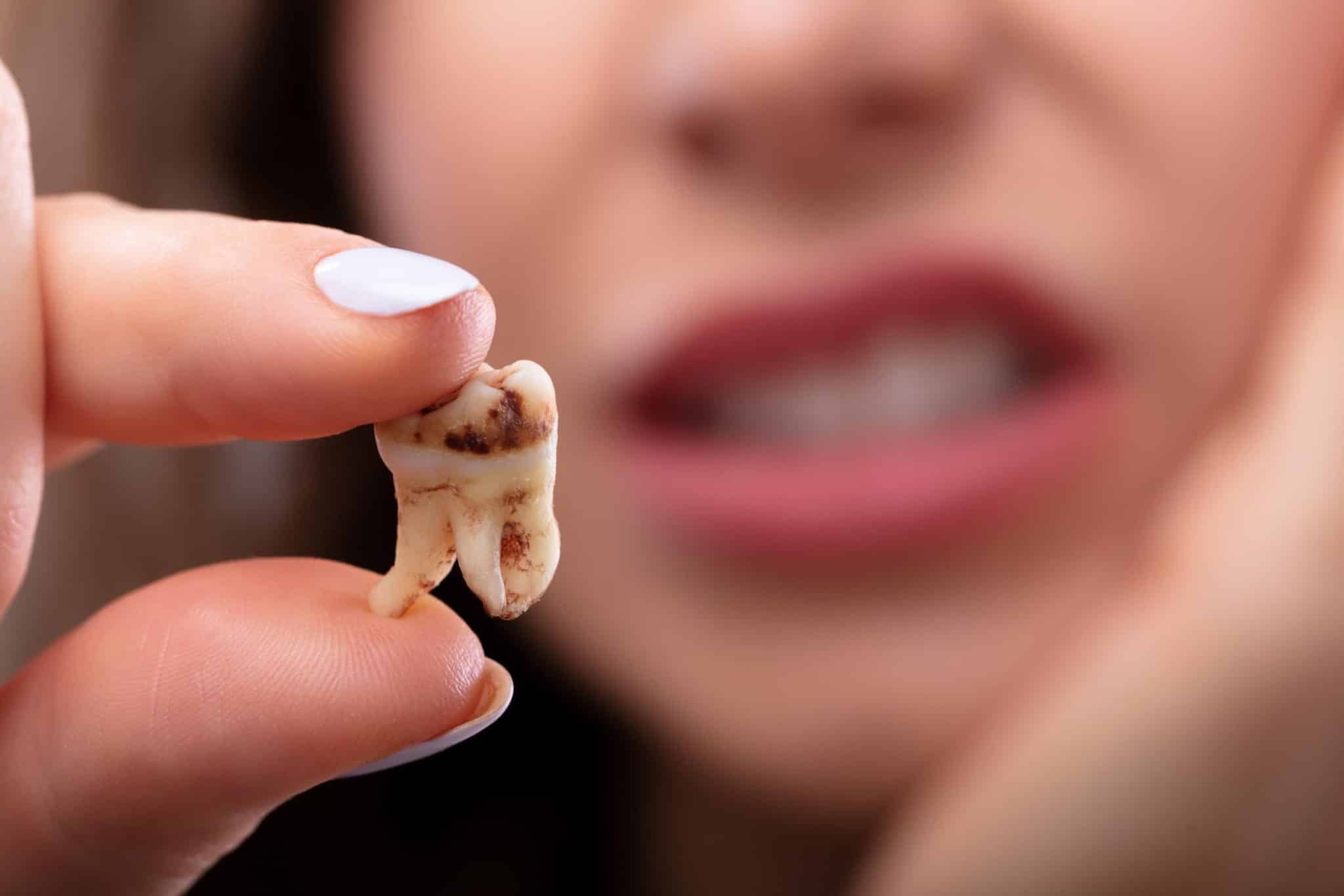In Summary
- Tooth decay is the progressive destruction of a tooth caused by naturally occurring bacteria in the mouth
- · The appropriate treatment depends mainly on the stage of the decay
- · Several factors increase the risk of developing cavities
- · Different symptoms may indicate the presence of tooth decay
Cavities are among the most common dental issues patients face. If not properly treated by a dentist, they will continue to develop and may eventually lead to the complete loss of the infected tooth. That’s why it is essential to prevent the onset of tooth decay to maintain good oral health.

What is tooth decay?
Tooth decay is the progressive destruction of a tooth by bacteria.
How does a cavity form?
Cavities develop due to bacterial proliferation. Tooth decay progresses through four stages:
- Stage 1: Enamel decay – It begins at the tooth surface, affecting the enamel.
- Stage 2: Dentin decay – The decay reaches the dentin, the layer beneath the enamel.
- Stage 3: Pulpitis – If untreated, the decay reaches the pulp (the nerve).
- Stage 4: Periapical abscess – The infected pulp tissue becomes necrotic, causing a dental abscess.
What are the risk factors?
Several factors increase the risk of developing cavities, including:
- Buildup of plaque and tartar: Some bacteria, like streptococcus mutans, produce acids from sugars. As they multiply, they soften and dissolve the tooth’s outer layer, forming a cavity.
- Frequent snacking and consumption of sugary or acidic foods: There is a direct link between sugar consumption and cavity formation, especially with refined sugars and industrial sweeteners found in soda, candy, and pastries.
- Poor oral hygiene: Not brushing regularly and not visiting the dentist at least once a year promotes the development of cavities.
Did you know?
Wearing braces can increase the risk of cavities, as can reduced saliva flow due to certain medications (such as radiotherapy for cancer) or pregnancy.
What are the symptoms of tooth decay?
Cavities often don’t cause any symptoms at first, which is why many patients delay treatment.
However, there are several signs to watch out for:
Increased sensitivity to temperature changes
If you feel discomfort or pain when consuming hot or cold foods and drinks, this could indicate a cavity.
Sharp pain in a specific tooth
If you feel sharp pain in a specific area, whether while chewing or not, it may be due to tooth decay.
Formation of a dental abscess
A dental abscess is a pus-filled pocket caused by bacterial infection, usually resulting from untreated decay.
A visible spot or cavity
If you notice a black spot or a small cavity on a tooth—even without other symptoms—it may be a tooth decay.
CHD Tip
Did you know all teeth can develop cavities—including wisdom teeth? If you’re experiencing sharp pain in a wisdom tooth, schedule a dental check-up.
How to prevent cavities?
Most cavities can be avoided with proper habits. Here are 3 essential tips:
Maintain excellent oral hygiene
Brush your teeth at least twice a day and clean between them using dental floss or interdental brushes.
Visit your hygienist and dentist regularly
Since cavities can develop without symptoms, annual check-ups and professional cleanings are essential.
Adjust your diet
Limit your sugar intake to reduce the risk of cavities. Here’s how:
- Many processed foods contain added sugars – check labels.
- Choose healthy snacks like apples or blueberries (rich in antioxidant polyphenols).
- Avoid sugary drinks and don’t add sugar to tea or coffee.
What treatments are available?
The appropriate treatment for a cavity depends on how far it has progressed.
Stage 1: Treating a shallow cavity
At this early stage, cavities may not require invasive treatment. Monitoring or remineralization with fluoride varnish or fissure sealing may be enough.
Stage 2: Treating a cavity that has reached the dentin
When decay reaches the dentin, restorative treatment is needed. The infected tissue is removed and the cavity is filled with composite material.
Stage 3: Deep dentin involvement
At this point, the tooth is weakened and dentists often recommend an inlay or onlay to restore the lost structure.
Stage 4: Pulpal involvement
If decay reaches the pulp, root canal treatment may be required, followed by an onlay or crown.
In some cases, pulp capping may preserve the vitality of the pulp.
At this stage, the situation is a dental emergency—don’t delay treatment.
FAQ
Are cavities hereditary?
The role of genetics in cavity development is debated. However, poor oral hygiene and bad dietary habits remain the main causes.
Can a cavity be reversed?
Once decay starts, it cannot heal on its own. In early stages, treatment with fluoride varnish or sealants may stop its progression.
Can cavities affect general health?
Long-term toothache can lead to sleep disturbances and chronic fatigue. Infections can also spread, causing facial cellulitis, skin fistulas, or sinusitis.
In immunocompromised or chronically ill patients, bacteria entering the bloodstream from an abscess can lead to joint, heart, or lung problems.
Are children more prone to cavities?
Yes. Many parents underestimate the importance of early dental care. Children should see a dentist from a young age to treat any cavities.
‘Baby bottle tooth decay’ is also a risk. Falling asleep with a bottle leaves sugary liquids in contact with teeth, causing decay in young children.
Are sugar-free drinks safe for teeth?
Even sugar-free sodas are acidic and weaken enamel, increasing cavity risk. Only water—especially fluoridated water—truly protects against cavities.
What’s the difference between a cavity and tooth sensitivity?
Tooth sensitivity causes discomfort or pain in teeth or gums. It can indicate decay, but not always—it may be harmless.
If in doubt, consult your dentist.
How much does cavity treatment cost?
Treatment costs vary by the stage of decay and the clinic. At CHD, expect to pay around 200 to 350 CHF for standard cavity treatment.

